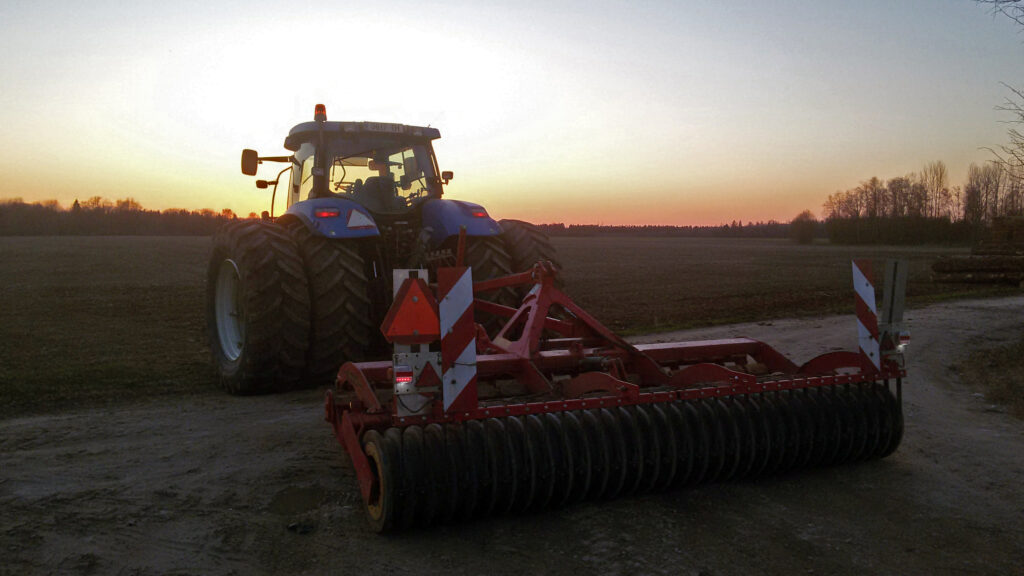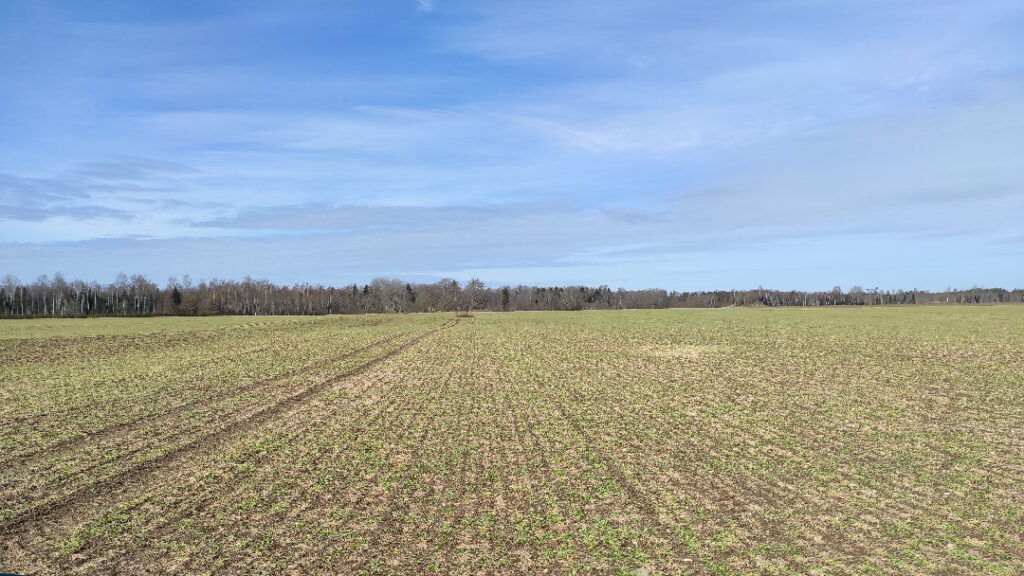In collaboration with René Brand from Rapool International
I intentionally chose a provocative title to spark interest. Have I successfully grown winter rape? Not in recent years. Honestly, even before the 2024 harvest (which will probably be disappointing), I considered not growing winter rape at all. But when things seem darkest, help is often closest. My rape field was visited by the Rapool Estonia and International PM René Brand, who filled my head with very interesting information, which I will try to unpack here.
Maybe it will help you too?
The Biggest Lesson – Autumn Work
I was surprised to learn that 70-80 % of winter rapeseed yield is set during autumn. The crucial number of side shoots is determined in autumn, and there is NOTHING, which you can do in spring to correct the mistakes made in autumn! I had been stuck in the mindset that if the plant survives a bit of winter damage, it’s possible to influence the number of productive shoots with spring growth regulators. But you can’t!
In spring, the farmer is the manager of the crop’s potential, ensuring to realize the possible potential. You fertilize and spray to support the available pods and seeds, respectively to protect them against possible upcoming diseases or pests like stem weevils or Verticillium. By the way, I’ll write more about improving the effectiveness of pest control later.
What Needs to Be Done Correctly in Autumn?
Today it becomes more and more important to find the right sowing time for a successful foundation! I had the opinion that the earlier, the better! We still see in many parts of Estonia, that rapeseed is sown as early as possible end of July, beginning of August. But today’s winter rapeseed varieties grow so intensively and use the increasingly warm autumn temperatures so effectively that early sowing does not guarantee a good yield the next year. In fact, it can be counterproductive. Why?
How to Calculate the Right Sowing Time?
What do we have to know? Winter rapeseed needs before winter around 800°C and modern hybrids grow continuously above +4°C. If you like to know your best sowing date or how long you can seriously grow rapeseed, I recommend the possible International calculation:
- Take the average daily temperatures above 4 degrees Celsius for your area over recent years (it’s good if you have your own weather station).
- Calculate backwards, for example the rapeseed growth stopped on October 20th, 2023 and you sow on August 1st, than we have a growth period of 80 days
- In August: 30 days multiplied with avg. daily temperature of 18°C
- In September: 30 days multiplied with avg. daily temperature of 12°C
- In October: 20 days multiplied with avg. daily temperature of 7°C
- In total: 1.040 °C, 240 °C more than necessary or 30 % “overgrown”
- Small side fact: 240°C is almost 2 additional leaf pairs, which have to be “regulated” by 2x extra fungicide sprays!
- According to this example a more suitable (less stress) sowing date would be 12th of August. According to this calculation you can also find the latest possible sowing date for your area.
- The local calculation (Estonian approach) is slightly different, as they take in mind also the traditional border of 5°C (still working for “open pollinated” varieties). Therefore, they reduce the daily temperature with 5°C, which means they get small figures. If we do that for the example above, then the Estonian calculation will get 640°C, which is finally still too much, like underlined by the international calculation.
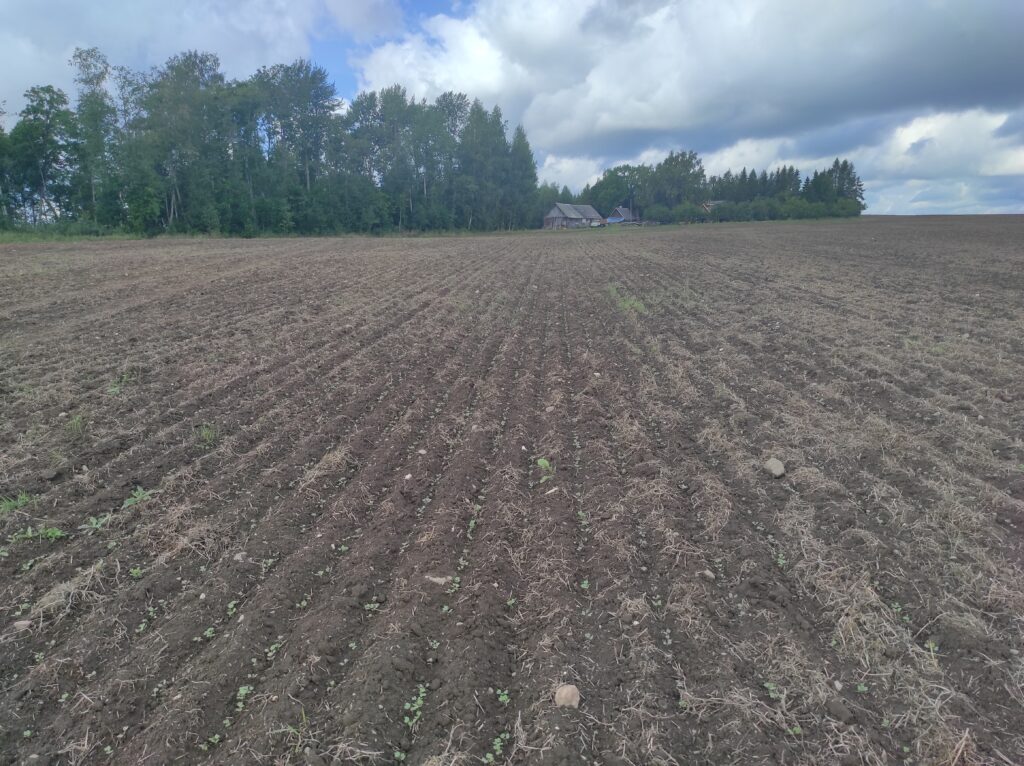
How to Promote Side Shoots?
The answer is complex and requires the right sowing time, as already explained and a customized growth regulation, which has to follow the development outside in the field. A powerful establishment, due to early sowing dates, warm temperatures, etc. needs an adapted growth regulation. Not just once, if necessary, farmers have to spray several times, starting with 4 leaf stage. Further developed leaves pairs requires additional sprays, based on a long-term experience, we count for each leave pairs around 120-150 °C and thus 1x extra spraying.
Although not an official recommendation, growth regulations could be calculated by the sum of effective temperatures. It takes 150 “day degrees” for germination of rapeseed, another (120 -150) 150 degrees for the establishment of the first leaf pair. If we plan to spray at 4 leaf stage (latest 6 leaves), we have to plan the application at 450°C, which should be by the end of August, according to the presented example (see above).
In my example, I sowed rapeseed on August 12th, and I should have done the first growth regulation around September 12th. I did it on September 21st, when it was already more than 520 degrees, meaning I missed the right application date. If I want now good growth regulation, it requires stronger products or higher intensity (meaning higher active ingredient).
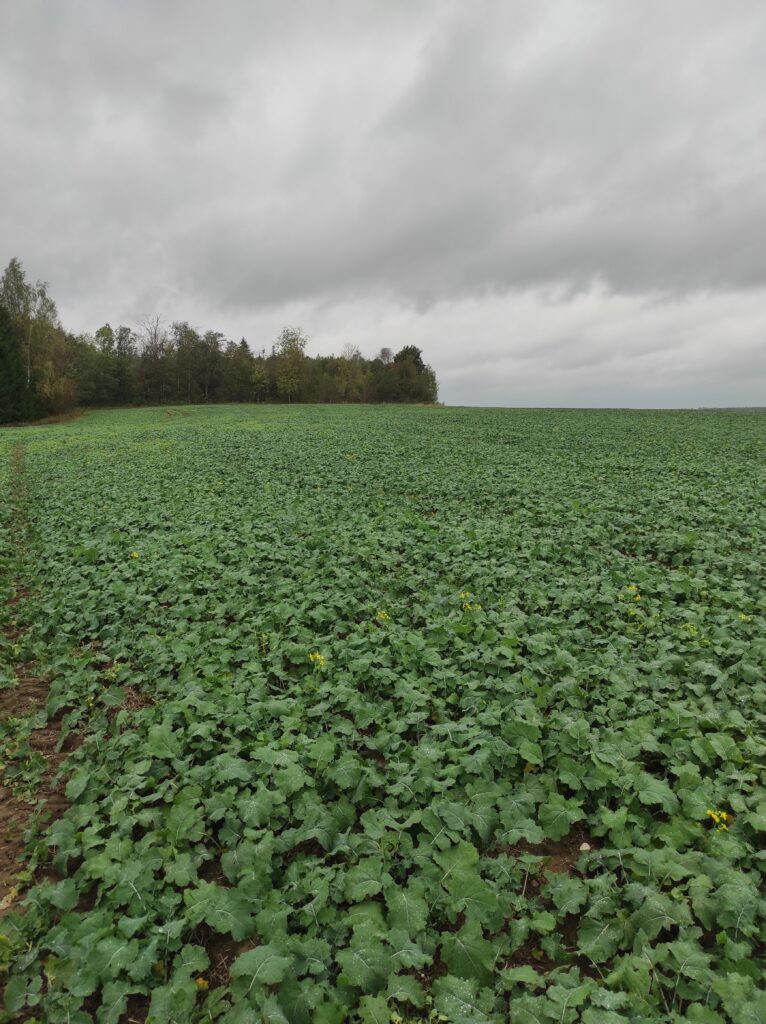
Plant Density is a crucial factor
A typical sowing rate for modern rapeseed hybrids is 50 plants/m2, established over the past years. As I mentioned above that new upcoming candidates became more and more vigorous in comparison to traditional hybrids like MERCEDES or ATORA, mainly due to the new TuYV (Turnip Yellows Virus) resistance, we have to adapt the sowing date respectively sowing rate. Otherwise, they grow too densely and stimulate each other upwards, which led to stem elongation and reduced winter hardiness. In other countries we see that new hybrids show the same yield potential with a lower seed density around 30-35 plants/m2. Possible under Estonian conditions? New trials by Rapool Estonia in Kuusiku will show, if less is more?
Growth Regulation is Done and the Crop Survived the Winter. Time to Fertilize?!
From what I’ve heard, to get a good yield, you should apply 170-200 kg of nitrogen in spring. That’s quite a lot and making the hectare cost pretty high. According to newer understanding, you should apply up to 150 kg of nitrogen; in fact, you can get the same good yield with just 100 – 120 kg. Keep in mind, that above 150 kg N/ha we see just a slight yield increase and on top a negative reduction in the oil content.
To achieve the same good yield level with such a lower Nitrogen fertilization, other applications must be very timely and precise, requiring you to know your crop and field very well. What can we do to support such a low Nitrogen intensity? Latest experiences show that early Nitrogen applications together with a sufficient amount of Sulfur (1 kg S for 5 kg N, better 1:4) are successful. Additional micronutrients with focus on Boron are highly recommendable. They can be applied via leaf fertilizers, together with fungicides. Rapeseed farmers should apply over the whole vegetation around 600 g a.i. of Boron, 300g in autumn (increase winter hardiness) and at least 300g in spring (better pollination).
Newer varieties use nitrogen so efficiently that fertilizing fields heavily in Estonian conditions looks like “waste of money”, not to mention environmental harm. Also, we should not forget, that high Nitrogen fertilization will just extend the rapeseed vegetation, prolong the ripening, which led to later harvest dates.
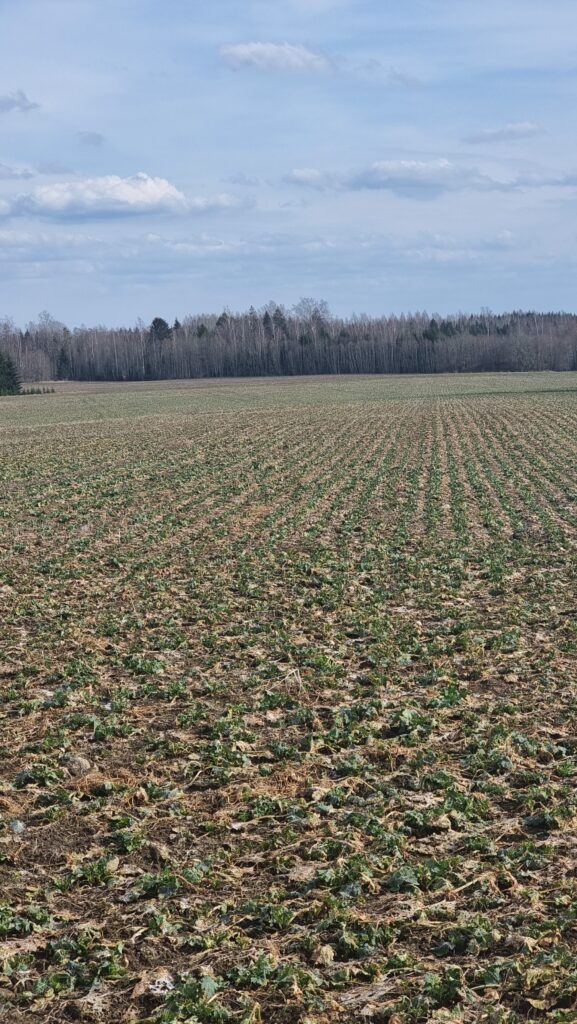
Okay, less fertilizer, but won’t pests still destroy the crop?
True, after the removal of Proteus and Biscaya insecticides from the market, there’s a sentiment that it’s not worth the hassle to grow winter rapeseed. Effective AND long-lasting control agents are essentially non-existent, making it a real challenge to keep winter rapeseed pest-free.
That requires an efficient usage of the available solution!?!
Using Insecticides Effectively
I was surprised to learn that the pH of the solution is important, when we speak about insecticides. If the prepared spraying water with the insecticides is getting alkaline (higher ph-value), the control effect of insecticides is reduced or non-existent. Insecticides requires the solution to be acidic, with a pH around 5-6. We can solve this issue, if we add ph stabilizers or acidic fertilizers (liquid nitrogen fertilizers).
A strong, dense crop is also an effective deterrent against pests. Losing half a ton from a 4-ton yield is not as catastrophic as losing the same amount from a 2-ton yield.
When using contact insecticides at night, spray with as few lights as possible. Insects react to intense light and hide, making them inaccessible to contact insecticides. It might sound a bit like pseudoscience, but I’m desperate enough to try anything.

What will I do now?
I’ve had such bad experiences with winter rapeseed in recent years that even though I want to give up. But the meeting with Rapool Estonia and René Brand from Rapool International motivates me to give rapeseed one last chance. I’ll try to follow all the tips described above. If it works, I’ll prove that changing my mindset can lead to success. If the result is still the same, then I have to admit that I’m not cut out to be a rapeseed grower 🙂


